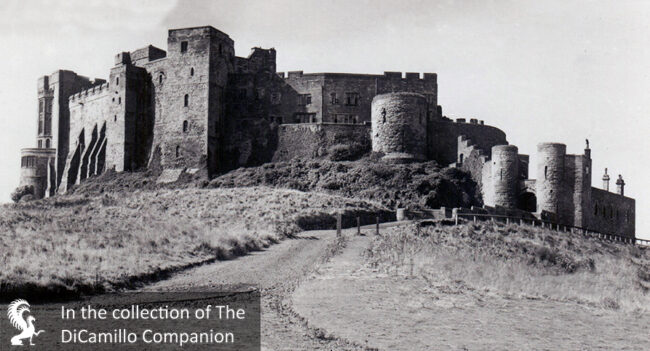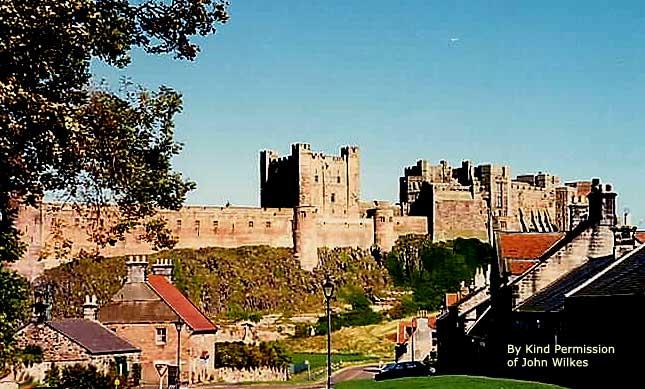
The house from a circa 1909 postcard

Earlier Houses: The earliest mention of Bamburgh Castle suggests that the citadel was a royal center by 547 AD. Excavations have shown that there has been a dwelling here since prehistoric times.
House & Family History: In 1704 the ruins of Bamburgh were purchased by the 3rd Baron Crew, who set in motion the plans to save and restore the castle, something that didn't begin in earnest until after his death in 1721. Lord Crew had significant landholdings in Northumberland, including the town of Blanchland, where the hotel, The Lord Crewe Arms, is named after him. Lord Crew had no children, with the result that his barony became extinct upon his death. All his estates were left in trust to further charitable activities; the trust survives today and continues to own much land in this part of the country. Bamburgh Castle was restored again, this time by the 1st Lord Armstrong, in the late 19th and early 20th centuries. Lord Armstrong was an extremely successful arms merchant. Such was his fame that he is believed to have been the model for George Bernard Shaw's arms magnate in his 1905 play, "Major Barbara." Lord Armstrong is also noted as the creator of Cragside, an exceptional Northumbrian Victorian country house, today owned by the National Trust.
Architect: Charles John Ferguson
Date: 1894-1900Country Life: XXIV, 160, 1908.
Title: Movie Locations: A Guide to Britain & Ireland
Author: Adams, Mark
Year Published: 2000
Reference: pg. 137
Publisher: London: Boxtree
ISBN: 0752271695
Book Type: Softback
House Listed: Grade I
Park Listed: Not Listed
Current Seat / Home of: Armstrong family
Past Seat / Home of: Nathaniel Crew, 3rd Baron Crew, 1704-21. William George Armstrong, 1st Baron Armstrong, 1894-1900.
Current Ownership Type: Individual / Family Trust
Primary Current Ownership Use: Private Home
House Open to Public: Yes
Phone: 01668-214-208
Email: [email protected]
Website: https://www.bamburghcastle.com/
Historic Houses Member: Yes